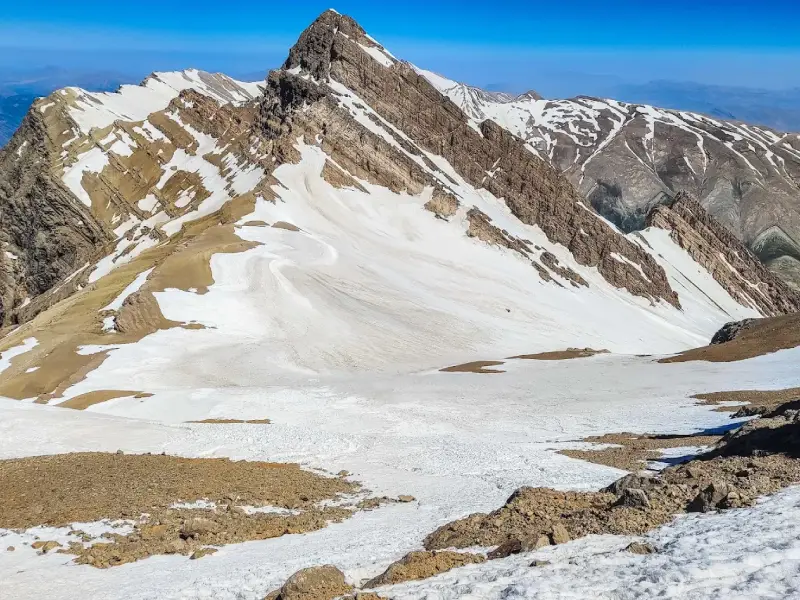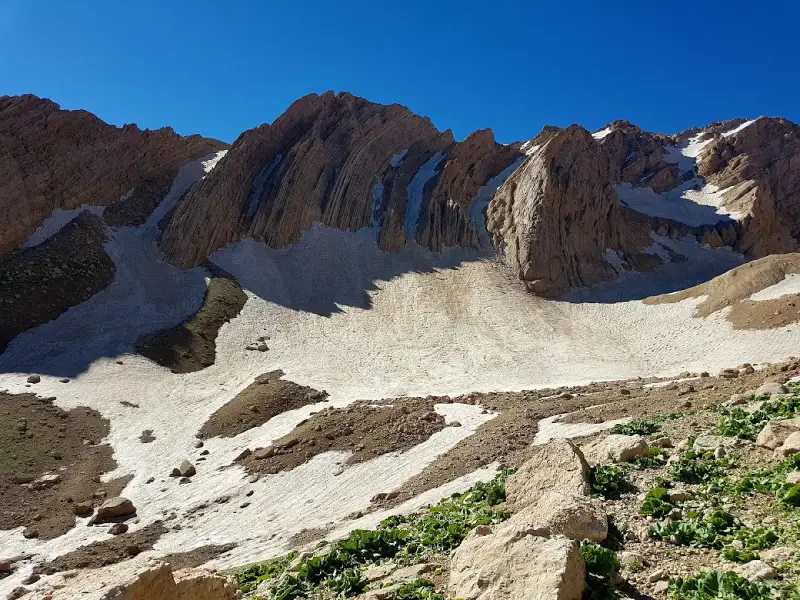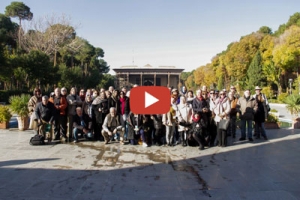Iran Mountain Ranges: From Alborz to Zagros
Iran mountain ranges are a dramatic and breathtaking part of the country’s landscape, stretching across vast regions and touching almost every corner of its territory. From the rugged spines of the Zagros Mountains to the towering majesty of the Alborz range, Iran’s highlands have shaped its climate, culture, and history. For outdoor adventurers, nature lovers, and anyone captivated by the raw beauty of the earth, the mountains of Iran offer a unique tapestry of experiences. Each peak tells a story, each range preserves ancient secrets, and together, they weave the incredible natural heritage of Iran.
These mountain ranges not only contribute to Iran’s stunning scenery but also serve critical roles in agriculture, water resources, and biodiversity. They are home to rare flora and fauna, ancient human settlements, and modern-day trekking routes that attract visitors worldwide. Whether you are planning an expedition, interested in geology, or simply want to learn more about this fascinating country, understanding Iran’s mountains is essential to appreciating its profound natural wealth.
About Iran Mountains
Iran’s terrain is famously rugged, with mountains covering nearly two-thirds of its landmass. These mountains have acted as natural barriers throughout history, influencing trade routes, settlements, and even military strategies. With peaks that soar above 5,600 meters and ranges that stretch for thousands of kilometers, Iran’s mountainous regions divide the country into distinct climatic zones, giving rise to diverse ecosystems.
The two main mountain systems dominating the Iranian landscape are the Zagros Mountains in the west and southwest and the Alborz Mountains in the north. Each system is geologically unique and formed millions of years ago through the collision of the Arabian and Eurasian tectonic plates. Besides these, there are many isolated highlands and volcanic peaks that further enrich Iran’s varied topography.
Zagros Mountain Range
The Zagros Mountains are Iran’s largest and longest mountain range, extending from the northwest to the Persian Gulf in the south. These mountains form an awe-inspiring chain that is both a natural fortress and a cradle of human civilization. Archaeological finds in the Zagros foothills suggest some of the earliest human settlements, dating back tens of thousands of years.
Characterized by limestone ridges, deep gorges, and sprawling valleys, the Zagros offer a wide array of ecological niches. The range acts as a critical water source for much of western Iran, feeding numerous rivers that are essential for agriculture. From hiking and camping to exploring ancient ruins, the Zagros Mountains are a treasure trove of adventure and history.
Dena
Dena is often regarded as the queen of the Zagros Mountains. It forms a subrange within Zagros, with its highest peak reaching 4,409 meters. The Dena massif is lush, forested, and crisscrossed by crystal-clear rivers, a stark contrast to the often dry landscapes surrounding it.
Biodiversity thrives in Dena, making it part of the Dena Biosphere Reserve under UNESCO. Oak forests, rare mammals like Persian leopards, and countless endemic plants inhabit its slopes. Dena is a paradise for eco-tourists, trekkers, and anyone interested in Iran’s rich natural heritage. Many choose the Dena trek as a gateway to exploring Iran’s wild heart.
Zard Kuh
The Zard Kuh, or “Yellow Mountain,” is another iconic peak within the Zagros range, located in the Chaharmahal and Bakhtiari Province. Named after the yellowish hue of its rocky slopes, Zard Kuh reaches an elevation of around 4,221 meters and is revered for its dramatic beauty.
The region around Zard Kuh is inhabited by Bakhtiari nomads, whose colorful culture and traditional lifestyle add a human dimension to the natural spectacle. In winter, Zard Kuh is often buried under thick snow, attracting serious mountaineers and backcountry skiers. In summer, it offers mesmerizing landscapes of alpine meadows and cascading streams.
Alborz Mountain Range
The Alborz Mountains are perhaps Iran’s most famous mountain range, arching across the northern edge of the country from the Azerbaijan border to the Caspian Sea. These mountains separate the arid Iranian plateau from the lush coastal plains of the Caspian and are home to Iran’s highest peaks.
The Alborz is a geological marvel, featuring steep cliffs, deep valleys, and volcanic summits. It also has a strong cultural footprint, appearing in Persian myths, literature, and art. The range hosts some of Iran’s most popular destinations for skiing, mountaineering, and hiking, thanks to its accessibility and stunning diversity.
Kolakchal
Kolakchal is a beloved hiking spot for residents of Tehran, located in the central part of the Alborz range. Standing at 3,350 meters, it’s a favorite destination for weekend trekkers and fitness enthusiasts who want a quick escape from the city bustle.
The trail to Kolakchal offers moderate difficulty, and the reward at the summit is a panoramic view of Tehran sprawling below and higher Alborz peaks rising majestically beyond. The route is dotted with cafes and small shelters, blending traditional mountaineering spirit with a relaxed, social vibe.
Tochal
Another gem near Tehran, Tochal, is more than just a mountain; it’s a symbol of the city’s relationship with the outdoors. Rising to 3,964 meters, Tochal’s accessibility is enhanced by a cable car system that takes visitors up to the Tochal ski resort, one of the highest in the world.
For more serious adventurers, Tochal’s summit trek is a thrilling challenge, especially in winter when snow and ice make the climb arduous. Tochal is not only a recreation hub but also a place where locals build a connection with nature, maintain a healthy lifestyle, and escape urban stress.
Alam Kuh
Often referred to as the “Alps of Iran,” Alam Kuh is the second-highest peak in the country, reaching 4,848 meters. Located in the Takht-e Soleyman massif of the Alborz range, it is famous for its steep north face, which offers some of the best technical climbing routes in Asia.
Alam Kuh’s pristine glaciers, granite cliffs, and alpine scenery attract mountaineers from around the world. Climbing Alam Kuh is considered a rite of passage for serious Iranian climbers. The surrounding area, rich with glacial lakes and wildflower meadows, provides stunning backdrops for trekking and camping.
Damavand
Standing at 5,610 meters, Mount Damavand is Iran’s highest peak and the tallest volcano in Asia. It is a national symbol deeply embedded in Persian mythology and literature, often representing strength and endurance.
Climbing Damavand is a dream for many mountaineers. Despite its altitude, the standard routes are accessible for fit trekkers with proper acclimatization. The mountain’s sulphur vents near the summit remind climbers of its volcanic nature. Damavand’s iconic snow-capped silhouette can be seen from Tehran on clear days, inspiring awe in all who behold it.
High Peaks of Iran
Beyond the famous summits, Iran is home to hundreds of other high peaks that offer incredible opportunities for exploration. Peaks like Sabalan (4,811 meters), Sahand, and Taftan provide diverse landscapes, from volcanic craters and hot springs to rugged alpine forests.
For serious mountaineers, Iran offers one of the most varied and accessible collections of high-altitude climbs in the Middle East. Whether you seek technical challenges, long treks, or simply want to immerse yourself in spectacular natural environments, Iran’s high peaks have something to offer every adventurer.
Shir Kuh in Yazd Province
Shir Kuh, meaning “Lion Mountain,” is the crown jewel of Yazd Province. Rising to an elevation of 4,075 meters, Shir Kuh stands proudly amidst the central desert, offering a stunning contrast to the surrounding arid lands. Its snow-capped peak can often be seen from hundreds of kilometers away, a beacon for trekkers and climbers alike.
Despite its desert surroundings, Shir Kuh boasts a surprisingly diverse climate and vegetation. The lower slopes are dotted with almond and pistachio trees, while higher elevations host cold-adapted flora. For adventure seekers, Shir Kuh is a moderately challenging climb that rewards visitors with breathtaking panoramic views of the vast Dasht-e Kavir and Dasht-e Lut deserts.
Karkas Mountains in Isfahan
The Karkas Mountains stretch across the northern part of Isfahan Province and are notable for their rugged beauty and historical significance. Towering over the charming towns of Natanz and Kashan, the Karkas range is believed to have been a refuge for ancient Zoroastrian priests during times of persecution.
With peaks reaching up to 3,900 meters, the Karkas Mountains offer a cooler climate compared to the surrounding plains. These mountains are popular among hikers and nature lovers who seek a less crowded, yet profoundly beautiful, outdoor experience. Springtime is especially magical, as the slopes are blanketed with wildflowers and the air is rich with the scent of blooming herbs.
Last Words
Iran’s mountains are far more than geological formations; they are living monuments to the country’s rich natural and cultural history. From the endless ridges of the Zagros to the snow-covered giants of the Alborz, each range invites discovery, reflection, and awe. They are places where ancient myths meet modern adventures, and where nature’s grandeur is on full, unforgettable display.
Whether you’re a trekker, a climber, or simply an admirer of stunning landscapes, Iran’s mountains offer a rare blend of beauty, mystery, and accessibility. As more people worldwide seek meaningful, sustainable travel experiences, Iran’s majestic mountains are destined to become an essential destination on the global adventure.
Are you planning to travel to Iran and looking for an Iran tour operator? Check out our Iran tours.










Leave a Reply
Want to join the discussion?Feel free to contribute!